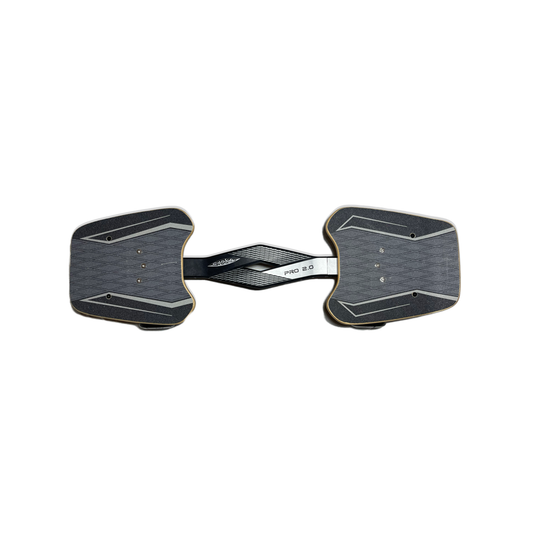What is the Difference between a Surfskate and a Snakeboard?
Share
Although the movement on a Snakeboard and a Surfskate are very similar, there are some subtle differences. Read on where we will delve into a bit of history of the two sports, the mechanics of the boards and how you power them along!
The History of Snakeboarding & SurfSkates
Although some of the Z-Boys do say that Skateboarding has always been been surfskating, Snakeboards do pre-date what is often referred to as a SurfSkate.
Snakeboards were invented in South Africa in the late 1980's, being released worldwide in the 90's.
Carver Skateboards released their first truck in 1996, the C7 with many other brands now offering a variety of trucks and full set ups.

The Mechanics of a Snakeboard & Surfskate.
A Surfskate deck comes in a variety of shapes and sizes, but is one full piece of wood.
It has a fixed back truck and a turning front truck, although we have seen a few people adding a turning front truck to both ends.
A Snakeboard is two independently pivoting plates connected by a central bar. The new for 2024 versions also features a front truck like that of a Surfskate, enabling the rider to carve deeper than ever and learn the movement quicker.
Powering a Surfskate & A Snakeboard.
On both the Surfskate and a Snakeboard you use your upper body to power the board along. On a Surfskate your feet remain static.
On a Snakeboard, using the two pivoting plates, you match the motion of your upper body with your feet. This enables you to produce high top speeds and ride up some super steep hills.
On the Pro version you can even add straps: enabling you to carry on carving and hop up and down curbs with ease.
Conclusion
So in conclusion a Snakeboard is the one of the earliest deep carving boards out there on the market. A Surfskate is a little more akin to a traditional skateboard. You cannot push on a snakeboard like on a surfskate, but the two pivoting plates produce alot of power and make the highly manoeuvrable.




